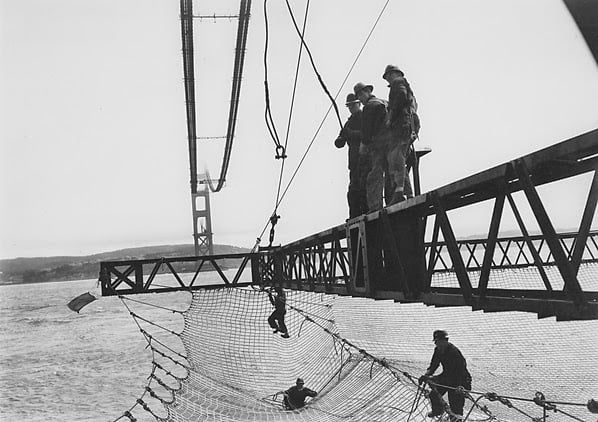The Golden Gate Bridge is a suspension bridge that spans the Golden Gate, a one-mile-wide strait that connects San Francisco Bay and the Pacific Ocean. The structure connects San Francisco, California, the northern tip of the San Francisco Peninsula, to Marin County, carrying both US The strait is crossed by Route 101 and California State Route 1. But did you know that the crew constructing the bridge were forced to wear safety gear?
Under threat of dismissal, construction crews on the Golden Gate Bridge were forced to wear their safety equipment. They also used other safety equipment and procedures to reduce workplace fatalities for the first time in history.
The Safety Precautions Taken on the Golden Gate Bridge
In the 1930s, it was common practice on high-steel bridge construction projects to expect one fatality for every $1 million spent. By those standards, the $35 million Golden Gate Bridge’s construction safety record was impressive: only 11 construction workers died. By contrast, 28 workers died while constructing the nearby San Francisco-Oakland Bay Bridge, which opened six months earlier.
On the difficult project, Joseph Strauss prioritized safety. The chief engineer made the construction site the first in America to require hard hats, and he spent $130,000 on an innovative safety net suspended beneath the bridge deck. The net saved the lives of 19 workers known as the Halfway to Hell Club, ten of whom died in a single accident on February 17, 1937, when a 5-ton work platform broke apart from the bridge and fell through the safety net. (Source: History)
The Community is all in for the Golden Gate
The bridge was built with little help from the federal or state governments. The Golden Gate Bridge and Highway District sold most of the bonds that provided most of the funding. Even though the district’s six counties were in the grip of the Great Depression, voters in 1930 approved a $35 million bond issue that required them to put up their homes, farms, and businesses as collateral. The overwhelming approval by a three-to-one margin reflected local citizens’ confidence in the project’s long-term economic benefits. In 1971, the construction bonds were retired. (Source: History)
The Not-So-Golden Location
Three months after the Golden Gate Bridge opened in August 1937, H.B. Wobber walked the span with a tourist he had met on a bus. This is where I get off, Wobber said abruptly to his companion. I’m going to jump, Wobber declared, ignoring the tourist’s attempt to stop him.
He hit the surface of San Francisco Bay at 75 miles per hour four seconds later, becoming the first of more than 1,500 people to commit suicide by jumping from the Golden Gate Bridge. That equates to one person every three weeks on average. More than 30 bridge jumpers survived their attempts at self-destruction. There are 11 crisis counseling telephones on the bridge that connects to trained suicide prevention counselors, and plans are being considered to build a net under the span as a suicide deterrent. (Source: History)
